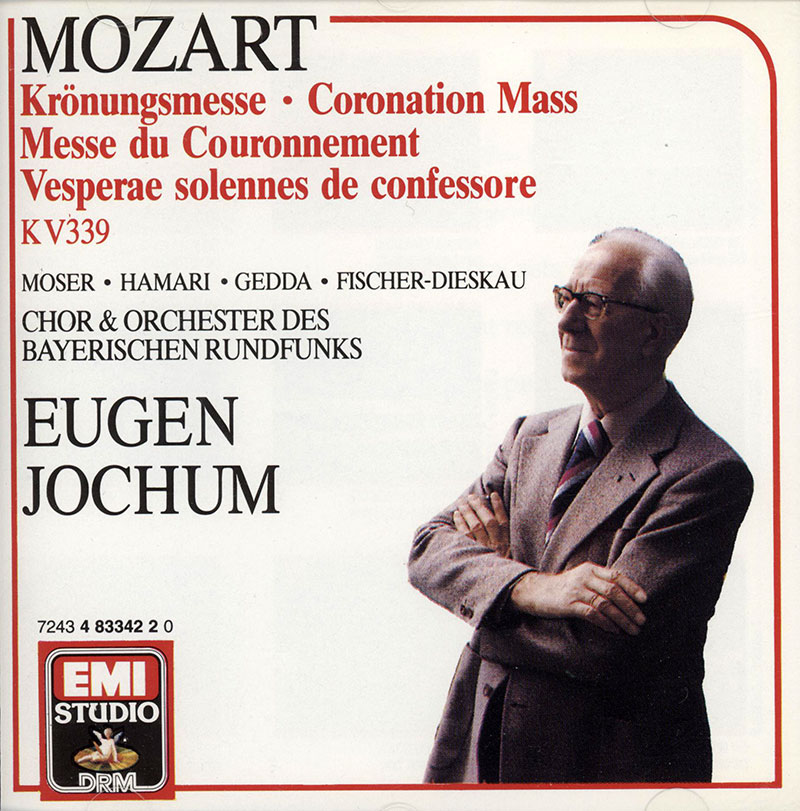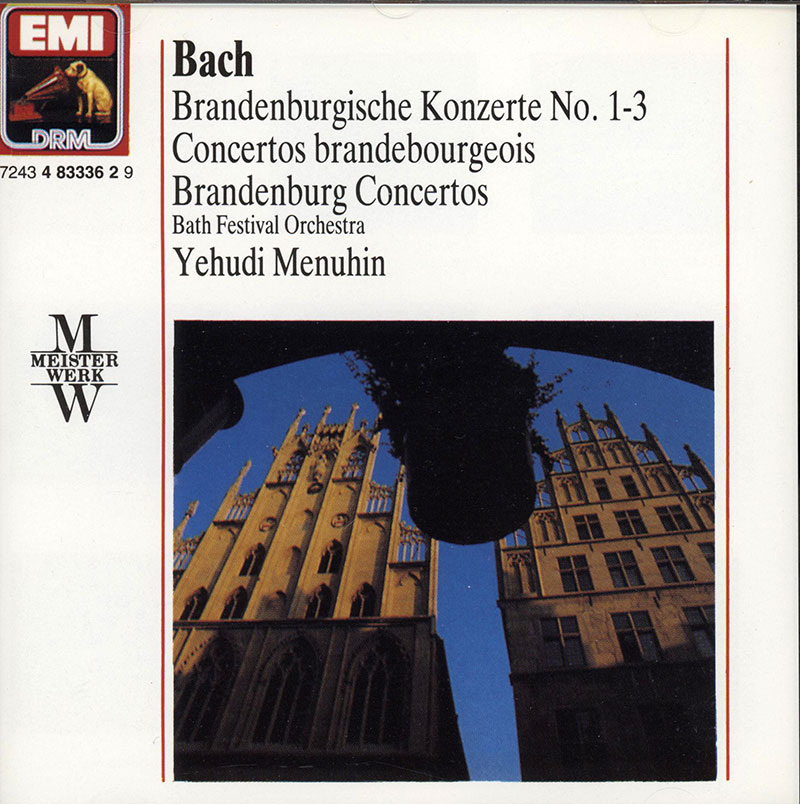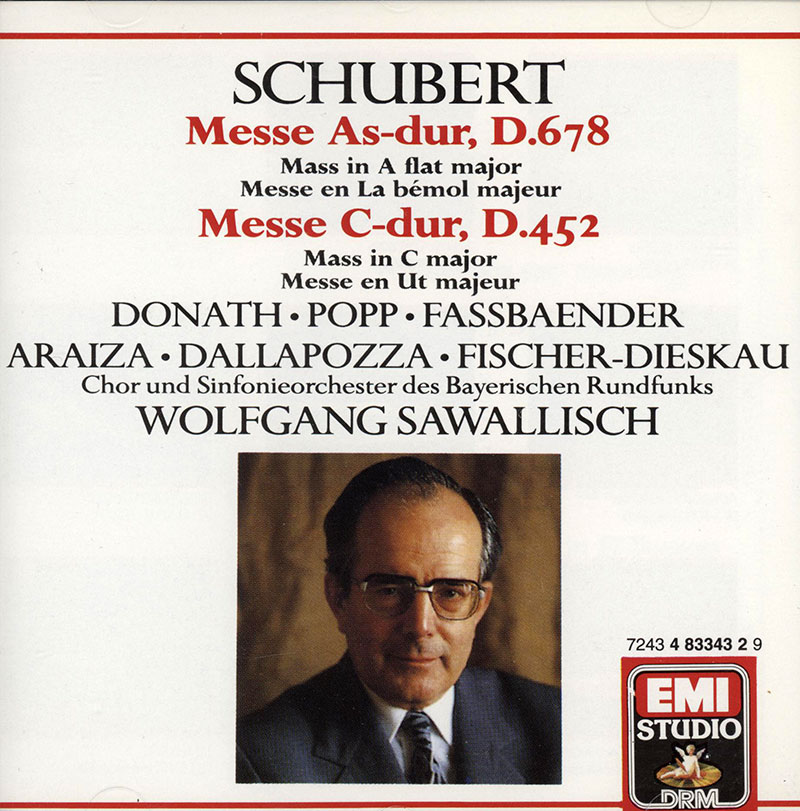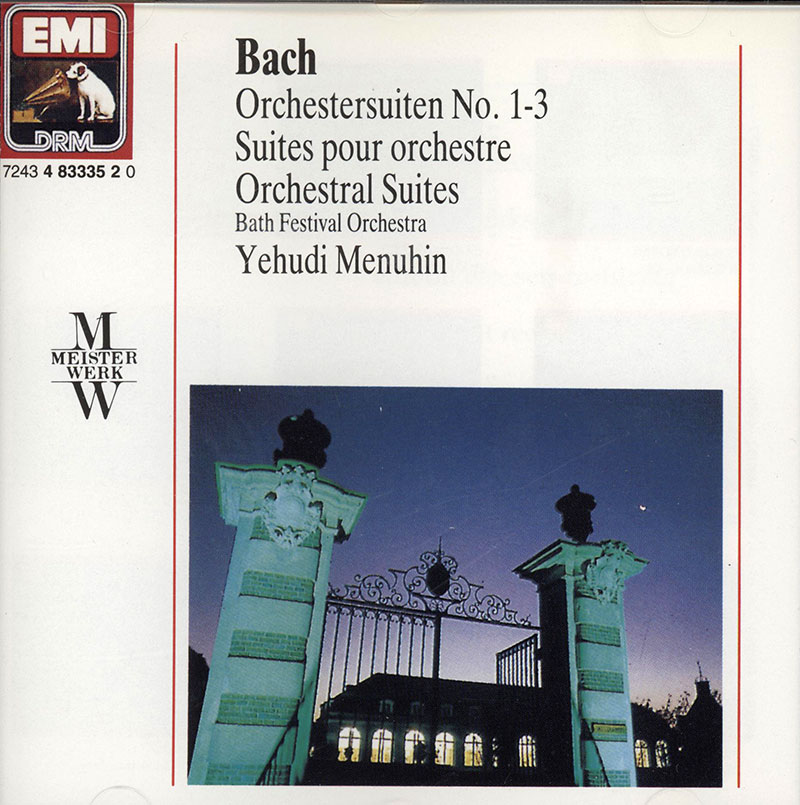Logowanie
Mikołaj - ten to ma gest!
Elton John, The Mamas & The Papas, Cat Stevens, Rod Stewart, Bobbie Gentry, Stevie Wonder, Engelbert Humperdinck
Memory Lane
Edycja Numerowana - 1000 egzemplarzy w skali światowej
RACHMANINOV, Eiji Oue, Minnesota Orchestra
Symphonic Dances / Vocalise
Best Recordings of 2001!!! NAJCZĘŚCIEJ KUPOWANA PŁYTA Z RR!
Karnawał czas zacząć!
Music of Love - Hi-Fi Latin Rhythms
Samba : Music of Celebration
AUDIOPHILE 24BIT RECORDING AND MASTERING
CHOPIN, LISZT, DEBUSSY, DVORAK, Gerhard Oppitz
Dances romantiques - A fantastic Notturno
Wzorcowa jakość audiofilska z Clearaudio
Winylowy niezbędnik
ClearAudio
Double Matrix Professional - Sonic
najbardziej inteligentna i skuteczna pralka do płyt winylowych wszelkiego typu - całkowicie automatyczna
MOZART, Edda Moser, Nicoali Gedda, Dietrich-Fischer Dieskau, Eugen Jochum, Symphonie-Orchester des Bayerischen Rundfunk
Mass No. 15 Coronation / Vesperae solennes K. 339
- Edda Moser - soprano
- Nicoali Gedda - tenor
- Dietrich-Fischer Dieskau - baritone
- Eugen Jochum - conductor
- Symphonie-Orchester des Bayerischen Rundfunk - orchestra
- MOZART
Cyfrowy analog!
Description by Roger Dettmer [-] Mozart composed this C major Mass, K. 317, the finest of his 16 complete masses, for services in St. Peter's Cathedral at Salzburg on March 23, 1779, shortly after his return from the ill-starred journey to Mannheim and Paris. Thereafter, he wrote only the 1780 Missa solemnis in C, K. 337, and in Vienna those two colossal torsos, the "Great" but incomplete C minor Mass of 1783 (K. 427/417a), and the unfinished Requiem (K. 626). When Hieronymous Colloredo became Prince-Archbishop of Salzburg in 1772, he decreed that masses -- music and all -- not last more than 45 minutes. This accounts for Mozart's designation of eight as Missa brevis or short mass. Two more are formally entitled Missa solemnis (solemn mass; K. 61a, and K. 337), and a third one Missa longa (long mass; K. 246a). The rest, all in C major culminating in K. 317, were called simply Missa, though several would acquire subtitles -- including "Coronation." For more than a century, it was supposed that K. 317 celebrated the local investiture of a statue of the Virgin. Not so, according to more recent scholarly consensus: it was assigned that sobriquet in Hapsburg court circles after Antonio Salieri conducted a performance at the Prague coronation of Leopold II in August 1791, less than four months before Mozart's death. Like the other C major/minor masses in Mozart's Salzburg portfolio, this one is scored for trumpets, plus two oboes and horns, three trombones, timpani, continuo, organ, and two violins. The use of musical structure is notable beyond the Kyrie's traditional ABA form. The Gloria is likewise ternary, while the Credo is a rondo, with a hushed, harmonically venturesome, heart-stopping "Et incarnatus est" at its center. Even more striking are thematic recurrences throughout; for example, Kyrie music in the concluding "Dona nobis pacem," and the Credo's "leap of faith" subject in subsequent movements. Just as striking is the soprano's "Agnus Dei...miserere nobis" aria, which anticipates the Countess Almaviva's despairing "Dove sono" in The Marriage of Figaro by seven years. The Kyrie, Gloria, Credo, and Sanctus all begin with C major choral proclamations, accompanied by timpani and trombones. The four solo voices don't come prominently to the fore until "benedicamus te, adoramus te" in the Gloria. Mozart gives them the "Dominus Deus...Filius Patris" stanza before the chorus sings a solemn, minor-key "Qui tollis peccata mundi...Qui sedes." The Gloria "Amen" features soloists until a final choral interjection. Hearing a jubilant "Et resurrexit" after the murmured pieties of "Et incarnatus" and "Crucifixus" in the Credo, one realizes that Mass music of this sustained expressivity would not be repeated until Haydn's last six masterpieces of 1796-1802, although Mozart's comparable mastery of counterpoint remained shackled until he finally freed himself from Prince-Archbishop Colloredo's prescriptions. The Sanctus in K. 317 is more solemn than jubilant; likewise the Hostias, although it moves at a quickened tempo. Surely Beethoven knew this Mass; his Benedictus in the Missa solemnis of 1823 begins with a consolatory violin solo, as Mozart's does here. Wind writing throughout anticipates the great Viennese piano concertos between 1782 and 1791. On the threshold of permanent liberation from Salzburg without yet knowing it -- indeed, while feeling early on in 1779 that he'd been remanded to servitude in a provincial purgatory -- the incomparable Mozart came of age musically.

































